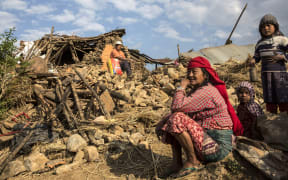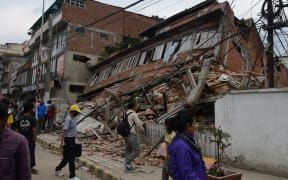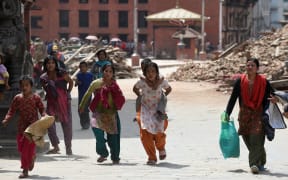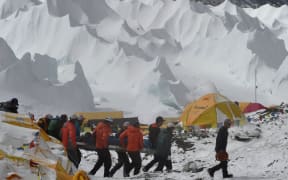Nepali officials have conceded they made mistakes in their initial response to a massive earthquake as survivors stranded in remote villages and towns wait for aid and relief to arrive.
It is feared the death toll from the earthquake could double to 10,000 as rescuers try to reach areas outside Kathmandu.
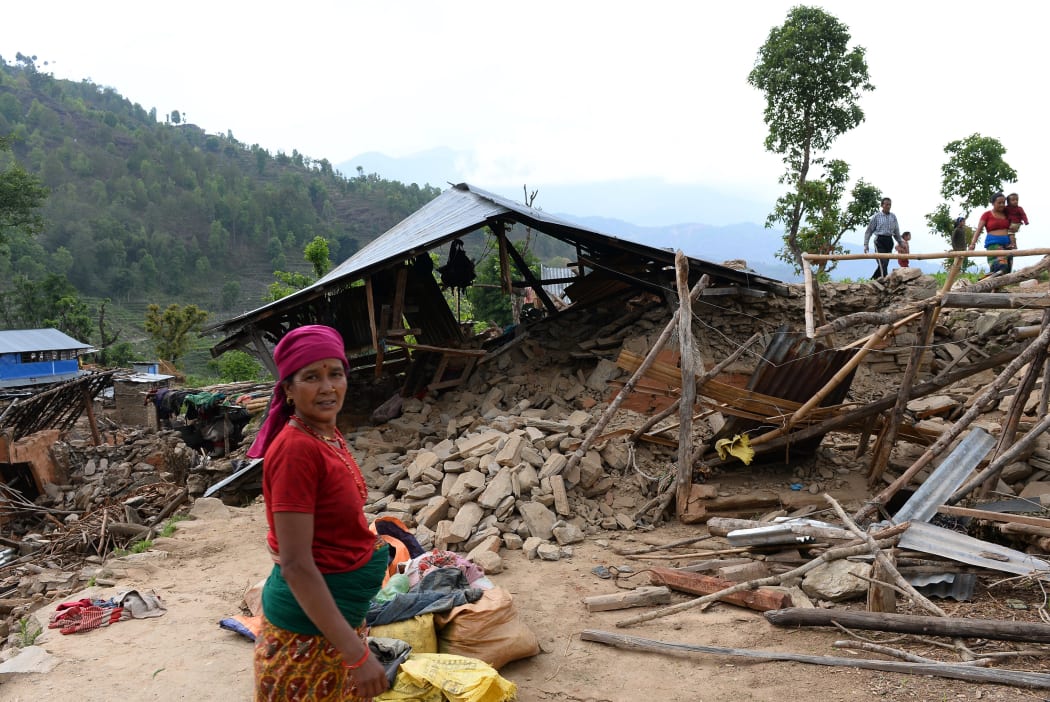
A villager stands near a damaged house at Arupokhari in Gorkha, Nepal. Photo: AFP
The United Nations estimates eight million people have been affected by Saturday's massive 7.8 magnitude quake - more than a quarter of Nepal's population.
Officials said the death toll has passed 5000 and could reach 10,000 once information comes in from far-flung villages and towns.
The National Emergency Operation Centre says another 10,000 people are injured and more than 450,000 are effectively homeless.
The Nepali government said it could not cope with the scale of the disaster and the vast relief operation needed to help its people.
Nepal's Communication Minister Minendra Rijal said it was a disaster on an unprecedented scale.
He said there had been some weaknesses in managing the relief operation, but the government would improve its efforts.
UN spokesperson for the office for humanitarian affairs in Kathmandu Orla Fagan said operations were increasing at the main airport.
"They have it open 24/7, the flights are coming in and going out all day and all night long."

Damaged houses can be seen from an Indian Army helicopter in Gorkha. Photo: AFP
Aerial and satellite images suggest some villages on steep hillsides near the epicentre of the quake have been entirely reduced to rubble.
Many mountainous areas remain cut off and, although international aid has started arriving, disbursement has been slow - partly because aftershocks have sporadically closed Kathmandu's Tribhuvan International Airport.
World Vision spokesperson Matt Darvas said some communities had not been heard from in days and there was a critical shortage of helicopters.
"We need the right kinds of helicopters to come here. We need the kind of helicopters that can access these remote areas, make their landings, and pick up people for rescue."
Mr Darvas, who has been living in the city of Pokhara for the past two years, said the international community had been very generous but communication on where supplies were sent was essential.
Three New Zealand Red Cross workers are on their way to Kathmandu to help establish communication links. The team is completely self sufficient and will be camping at the airport
Red Cross International disaster manager Andrew Mckie said the team would hit the ground running as soon as they arrived.
"They're establishing a hub for telecommunications - radio, satellite phones and internet connections, so we can get a lot more information," he said.
"They'll deploy teams out with telecommunications equipment so there'll be a lot better flow of information to remote areas."
Army helicopters have circled over Laprak, a village best known as the home of the Gurkha soldiers - where a local health official estimated 1600 out of 1700 houses have been razed.
Helicopters have dropped food packets in the hope survivors can gather them up.
Villages 'wiped off the face of the earth'
New Zealand alpine guide Mal Hastins, speaking from Boudhanath near Kathmandu, said he was taking aid to some of the villages in the regions most profoundly affected.
Mr Hastins said, while the capital was slowly getting back on its feet, the true scale of the destruction in Nepal would not be realised for some time.
He said grassroots organisations had taken it upon themselves to help the more remote parts of the country.
"As of now, the Nepali government doesn't seem to have mobilised the army or the police forces into the outlying regions, and a lot of their efforts seem to be focused on Kathmandu," he said.
"The reports coming in from other areas are just - a lot of stuff has fallen down, villages have just been wiped off the face of the earth, all completely collapsed."
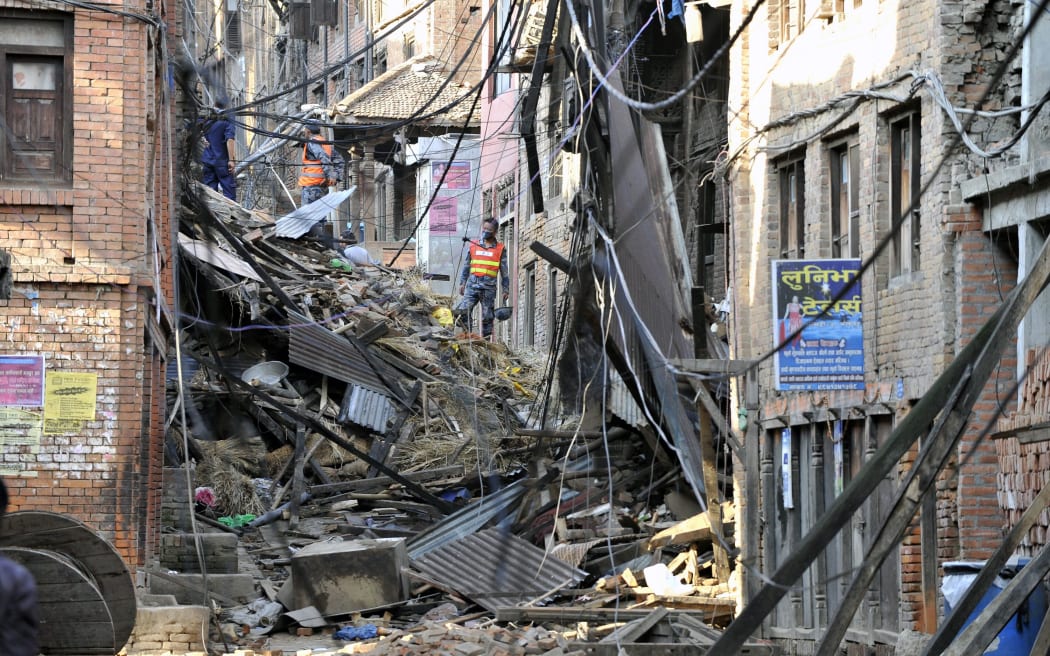
Damaged buildings in Bhaktapur, on the outskirts of Kathmandu. Photo: AFP
Mr Hastins said it was difficult to understand how Nepal's government could say New Zealand's Urban Search and Rescue (USAR) team was not needed.
"Aid organisations are coming in - at the international airports, C-130s are arriving and helicopters are flying in to and fro, even though there are only 13 actually flying," he said.
"New Zealand was sending the USAR team in, that was quite effective in the Christchurch earthquake, but for some reason the Nepali government said they were no longer required, so they were stood down."
Mr Hastins said taxis and buses were back on the roads in the capital and a few shops were starting to re-open.
The Ministry of Foreign Affairs and Trade said that 250 New Zealanders in Nepal had now been confirmed with only a few New Zealanders still unaccounted for.
Missing New Zealander Alicia Scroggins was confirmed alive and well after being unnaccounted for since the earthquake.
The 21-year-old was on a seven day trek with a friend and a guide when the earthquake hit.
Her mother, Lisa Scroggins, said it was the happiest day of her life.
"We're just so relieved because you know you're praying and hopeful and everything, but when you're watching the devastation over there you just don't know exactly where they are if they're alive or if they're injured somewhere or out of the reach of rescue."
Mrs Scroggins said Alicia needed to find a flight to from Kathmandu which could be difficult.
A mother whose son was travelling in Nepal said she was overwhelmed with relief when she finally heard from him, more than three days after the earthquake struck.
Christchurch's Rowan Barrie was travelling with a group of six preparing to trek the Annapurna Circuit in central Nepal when the quake hit.
His mother Diana Barrie who lives in Wellington said she was not worried to begin with, but as days passed with no contact, she became anxious.
"Now we knew he would be out of range so we weren't too worried at first but then there seemed to be no news whatsoever about Annapurna - nothing positive either, one way or the other, and we didn't really understand where he was."
She said she was overcome with joy when she heard her son was safe on Monday night.
A group of Christchurch students and teachers in Nepal will begin their journey home tonight.
The 25 students and four teachers from St Margaret's College were in Nepal as part of the World Challenge programme and escaped the earthquake unharmed.
However, they had been unable to fly out of Kathmandu until now.
The school's principal Gillian Simpson said the group was expected to arrive in Auckland about 4pm tomorrow afternoon, before flying on to Christchurch and arriving there about four hours later.
She said it will be a huge relief for the students to arrive home and be reunited with their families.
More on the disaster in Nepal
In Kathmandu, thousands of people have been forced to sleep in the rain without access to shelter, blankets, food or medical supplies.
Speaking from a makeshift office - a tin shed - in the capital, World Vision advocacy director Deepesh Thakur said people were too scared to stay in their earthquake-damaged homes.
Most have instead been sleeping outside in the cold and rain, which means distributing tarpaulins, tents and blankest to those affected has been a priority.
"Yesterday I was there with some of the police, trying to distribute tarpaulins, and I was really really struck by this old man approaching and trying to say 'can I get one?' and he was just showing the house in front of him that is cracked, half-broken," he said.
"His children would not enter the house because they were so traumatised."
Mr Thakur said World Vision staff had been working to reach rural communities with aid, and relief teams would be sent to help staff already based in smaller villages. He said water, food and medical supplies were also key.
Experts say the chance of finding people alive in ruins is now slim
But - in a rare glimmer of hope - a Nepali-French rescue team has pulled a 28-year-old man from a collapsed apartment block in Kathmandu, where he had been for 80 hours with three dead bodies and without food and water.
Doctors said it seemed the man, who had a broken leg, survived by sheer willpower.
- RNZ / BBC / Reuters
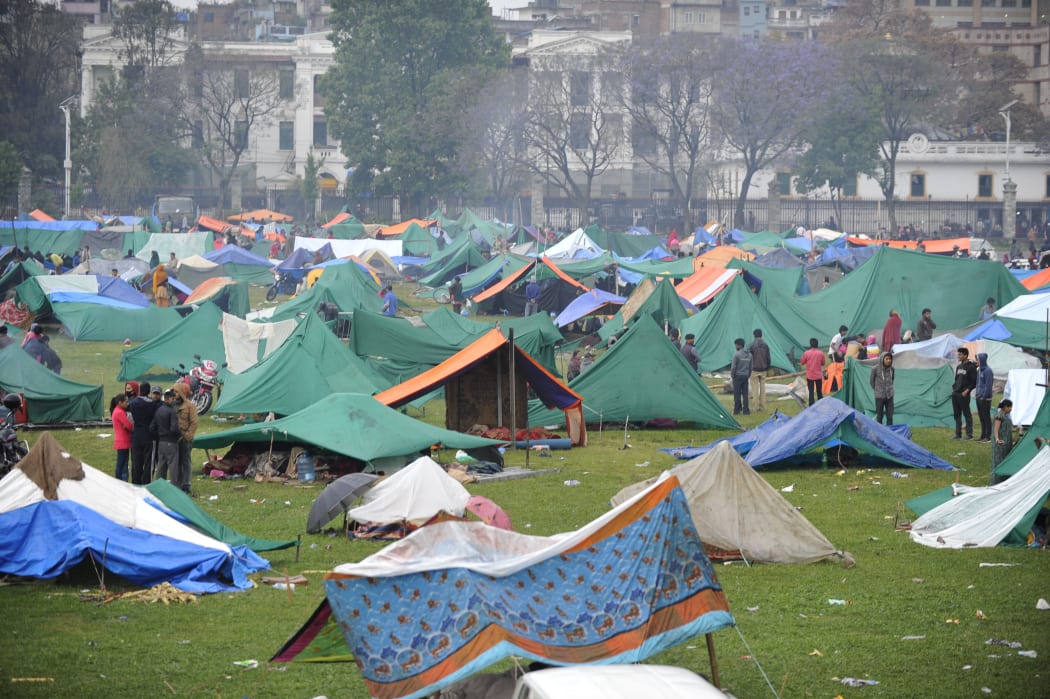
Tent cities have sprung up in Kathmandu for those displaced by the earthquake. Photo: AFP
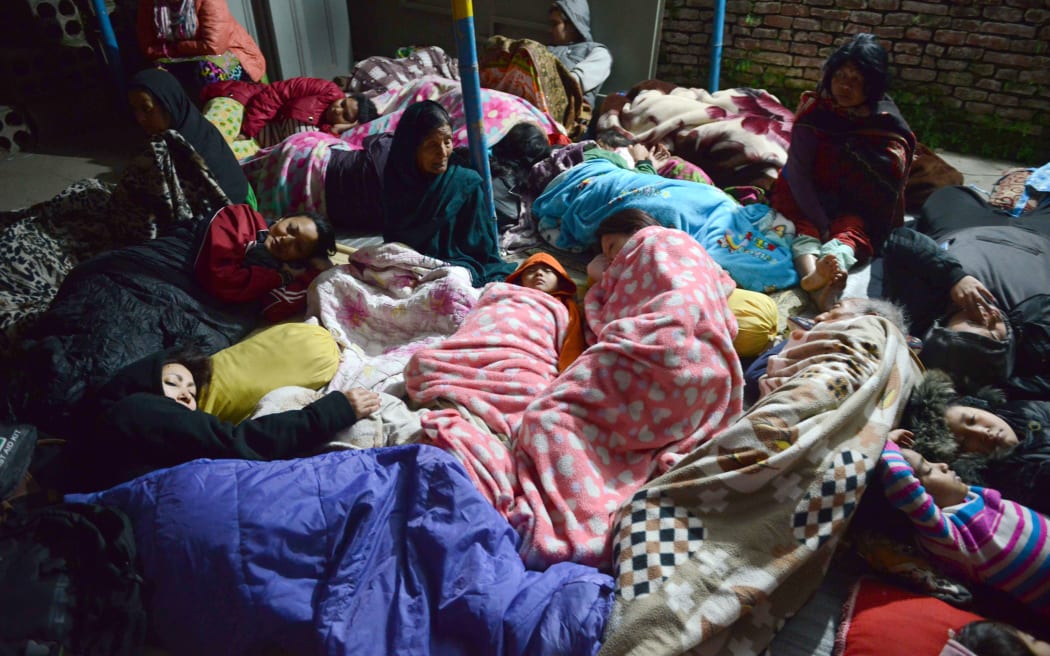
Kathmandu residents sleep in the open. Photo: AFP
